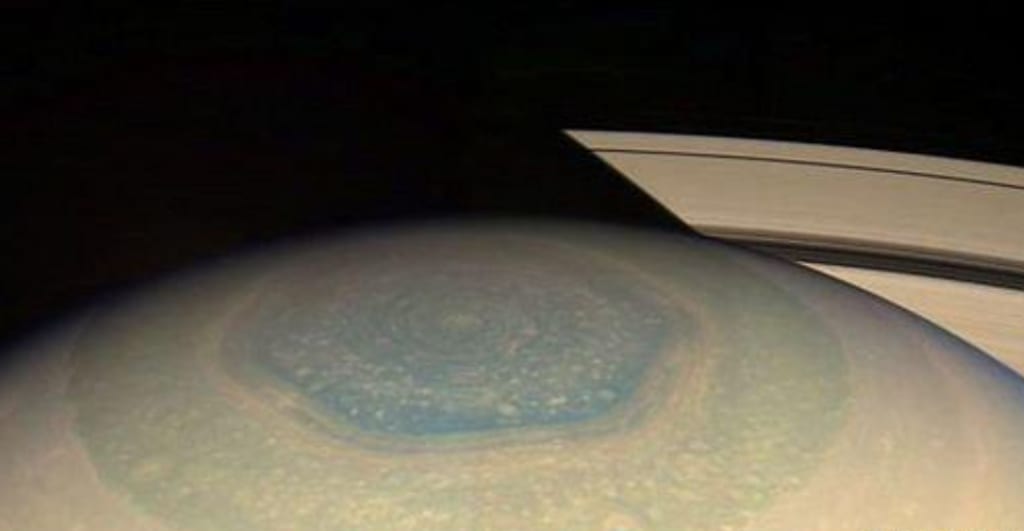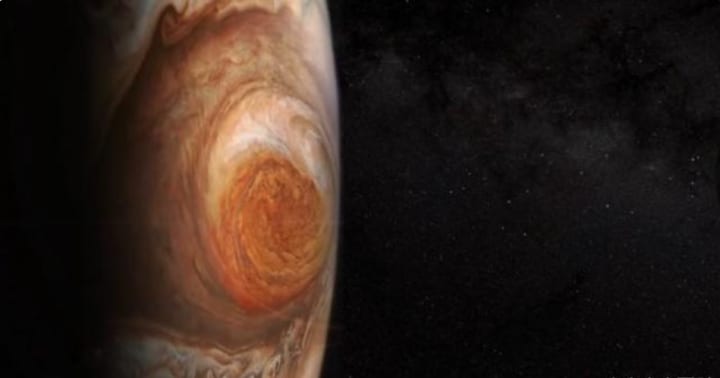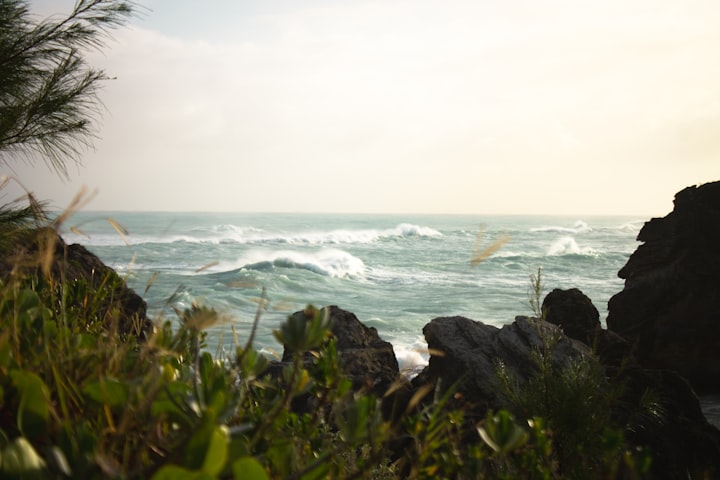Top 10 storms: Saturn's Great Black Spot Jupiter's Great Red Spot on the list
Top Ten Storms in the Solar System

The most common storms on Earth are typhoons and hurricanes. If you look at the entire solar system, what is the energy of the strongest storm in the solar system? What are the similarities and differences between storms on Earth? This article lists the top ten storms in the solar system. Let's take a look.
Saturn's hexagonal storm
Back in April 2013, Cassini sent back images showing a huge storm at Saturn's north pole. What's even more surprising is that the storm has a strange hexagonal feature, which is very different from the shape of storm rings on Earth. Scientists spotted the giant hexagonal storm ring as early as NASA's Voyager probe and Cassini confirmed the phenomenon. for nine years, NASA has been observing Saturn's six-sided storms at different wavelengths.
Neptune's black spot
The Great Black Spot (GDS-89) is a black spot that appears on Neptune, like Jupiter's Great Red Spot. It was discovered by NASA's Voyager 2 spacecraft back in 1989. Although it looks just like Jupiter's Great Red Spot, it is an anticyclonic storm. It is thought to be a relatively cloud-free region with winds of 2,400 kilometers per hour. It is the fastest cyclone in the solar system.
The Great Red Spot

Jupiter's Great Red Spot is a feature of Jupiter's surface. It is the largest storm cyclone on Jupiter, measuring about 25,000 km in length and spanning about 12,000 km. It rotates counterclockwise every six Earth days, often forming 8-kilometer-long cloud towers. It is as large as three Earths. It has been around for several hundred years. It has been around for at least 200 to 350 years since astronomers first observed the Great Red Spot in the 17th century. It has changed color and shape, but never completely disappeared.
Martian dust storms
Dust storms occur frequently in deserts on Earth, and there are dust storms on Mars. Stardust storms form in hot, calm, and dry conditions. Because of their small size, heat flows faster than the surrounding environment. Scientists have observed that dust storms on Mars are 10 times higher and 50 times larger in diameter than those on Earth, posing a serious threat to expensive Mars rovers. Dust storms on the surface of Mars are a phenomenon unique to the Martian atmosphere. Mars spends a quarter of the year in flying sand. Because of the high iron content of Martian soil, the dust storms are colored orange and the air is filled with red dust that looks like an orange cloud from Earth.
The twin vortices of Venus are unbreakable.
Back in 2006, the European Space Agency's Venus Express probe discovered cyclones at the south pole of Venus. Meanwhile, in 1979, NASA's Pioneer probe found a similar storm at Venus' north pole. Planetary scientists point out that these two vortices are permanent features of Venus' atmosphere. Further observations showed that these two vortices continue to disintegrate and recover every 2.2 days. The winds on Venus rotate westward at hundreds of kilometers per hour. The winds in the upper atmosphere can circle Venus, which is smaller than Earth, in just four days. Theoretically, this "super cyclone" combined with the natural circulation of hot air in the atmosphere would produce vortices over the North and South Poles. However, the question remains: Why is this a double vortex?
Jupiter's little red dot
Back in 2000, astronomers observed through the Hubble Space Telescope and other observations that three white gas clouds on Jupiter had merged into a large storm system, which scientists named "Oviparas". The system began to turn brown in late 2005 and turned red early the following year, hence the name "little red spot. The Little Red Spot is half the size of the Big Red Spot, but about the same size as Earth.
Saturn's mysterious eye of the storm
A giant vortex 32 kilometers above Saturn covers an area two-thirds the diameter of the Earth. The vortex resembles a mysterious black eye structure. Although the storm looks a bit like a typical hurricane, its features are not at all like a hurricane. The eye of the storm is fixed at the south pole of Saturn. In the storm cloud, which is 1,600 meters in diameter, winds reach speeds of up to 1,800 kilometers per hour.
Saturn's devastating storms
Back in 2004, the Cassini probe photographed a devastating storm in Saturn's southern hemisphere that spanned 3,200 kilometers and produced lightning 1,000 times stronger than that of Earth. The lighting was not directly observable, but only a strong radio signal could be detected. Dust storms on the Martian surface are a phenomenon unique to the Martian atmosphere. Mars spends a quarter of the year in flying sand. Because of the high iron content of Martian soil, the dust storms are colored orange and the air is filled with red dust that looks like an orange cloud from Earth.
Titan's mysterious dust storms
Titan is Saturn's largest moon and has one of the most unique climates in the solar system. Its atmosphere is very thin, consisting almost entirely of nitrogen and some methane gas. With the Cassini-Huygens probe, scientists found that winds near Titan's surface blow mainly westward, but in many places, dunes extend several kilometers eastward. Scientists attribute this phenomenon to Saturn's tidal forces and the influence of various geological activities, but models to explain dune formation still cannot account for the dunes' strange disorderly orientation.
A rare vortex storm on Mars
In 1999, a huge storm appeared on the polar ice of Mars. Although the storm covered four times the area of Texas, it completely engulfed the entire Martian north pole. The storm lasted for an Earth year and finally disappeared completely.
About the Creator
Apostolakis
To make scientific, diligence is the mother of success






Comments
There are no comments for this story
Be the first to respond and start the conversation.